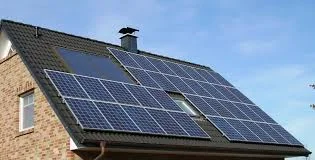The solar photovoltaic system compared to other renewable energy sources has many merits, writes Mallika Naguran.
SINGAPORE, 20 July 2017. Photovoltaic systems, wind turbines, hydropower... there are a number of renewable energy technology out there that generate cleaner energy compared to conventional fossil fuels like coal, oil and gas. But compared to most renewables, solar photovoltaic come out significantly better in terms of secondary impacts such as water use, greenhouse gas emissions, pollution and social disturbance.
1. PV - Everlasting power
The sun has been shining long before civilization as we know it began. People have become dependent on solar energy for light and heat as it is most reliable. As this energy is renewed daily with never-ending sunshine, solar photovoltaic (PV) capacity has grown fastest among all renewable energy in recent years.
Solar is greener than most renewables.
2. PV - Gentle on ecology
Harnessing the sun’s energy poses no threat to health and the environment – and it is definitely kind to corals. Fossil fuels such as coal, oil and gas, are highly polluting as they release chemicals and toxic elements into the atmosphere, land or sea when they are mined, drilled or transported. Oil spills from Exxon Valdez tanker and BP’s Deepwater Horizon oil rig are just two of the many environmental disasters that have hit the headlines. These oil spillages reduced wildlife populations and cost fishery and tourism companies huge losses for years.
Solar PV cells are made from crystalline silicon found most commonly in silica sand. Although certain chemicals are used to clean the semiconductor surface of the PVs during manufacture, leading solar manufacturers follow strict environmental laws and observe proper industrial waste disposal, ensuring no ongoing harm to both workers and environmental ecology.
“Compared to hydropower and biofuels, solar technology creates less disruption to people and wildlife.”
PVs also minimise land impact; small scale PV panels are located on rooftops while large ones such as utility-scale solar systems are sited typically on low grade land or disused locations such as brownfield sites and abandoned mining land.
3. PV - Climate change mitigation
Conventional energy sources are known to release massive amounts of carbon dioxide and greenhouse gases, which trap heat within the earth’s atmosphere and raise surface temperatures. Since the start of the industrial revolution, these have contributed towards unprecedented climate change. Results of this increase include extreme weather conditions worldwide, such as dry spells, droughts, wild fires, storms, hurricanes and flooding.
In contrast, the use of solar energy through PV panels to provide electricity does not emit any harmful gases as the fuel source that drives this energy is the sun. There are minor emissions in other stages of the solar lifecycle during manufacturing and material transportation.
However, most estimates of life-cycle emissions for PV systems are between 0.07 and 0.18 pounds (lbs) of carbon dioxide equivalent per kilowatt-hour (CO2E/kWh). Estimates for concentrating solar power (for heat) range from 0.08 to 0.2 lbs of CO2E/kWh. Both of these are still far less than the lifecycle emission rates for natural gas (0.6-2 lbs of CO2E/kWh) and coal (1.4-3.6 lbs of CO2E/kWh).
Charging electric vehicles using PV cells would be almost ideal to cap pollution. Some PV panels are in fact manufactured using solar power and efficient energy systems, reducing even further any carbon emissions during the manufacture stage.
Yingli Green Energy was the first company in the global PV sector to obtain Product Carbon Footprint Verification from TÜV Rheinland, a leading assessor of the product life-cycles. As part of this, the company boasts 39 Gigawatthours (Gwh) of clean energy powering its headquarters and production sites yearly.
4. PV - Poses no water challenge
Water, a basic human need, is a precious resource that has been found lacking in many dry and troubled areas. The United Nations Sustainable Goals report says poor water supplies affect more than 40% of the world’s population. As many as 663 million people do not have access to clean drinking water.
Agriculture, according to UN Water, is the biggest water user worldwide. Biofuels, claimed by some as a clean fuel source, ironically consume significant amounts of water during irrigation and feedstock processing, and in some cases result in human conflicts over land rights and water access.
Hydropower dams – another claimed “clean” source of electricity are widely used as renewable energy sources. But often, homes and villages are destroyed or relocated to make way for dam projects. River systems are usually altered, which affects wildlife habitats and freshwater ecosystems.
Compared to hydropower and biofuels, solar technology creates less disruption to people and wildlife. Although water is used in the manufacture operations of PV cells, responsible solar manufacturers such as Yingli take water consumption and waterways pollution seriously. They monitor manufacturing and distribution operations closely, adhering to national and international codes and certifications, and constantly measure impacts on the environment.
5. PV - Silent as the sun
While wind turbines are excellent electricity producers, most produce significant noise. Residents living within the vicinity of wind farms have reacted to high noise levels, something which a number of people are unable to get used to even after a long time. PV panels are not considered a nuisance as there are no moving parts to generate friction or sound.
The sun is quiet, and so are PV panels.
All this points to PV panels being greener than most other renewable energy sources, both in terms of manufacturing, operating, environment disturbance and emissions.
What do you think? Do you use solar panels or are thinking of installing a few? Leave your comments here.
Photo courtesy of Pujanak.

